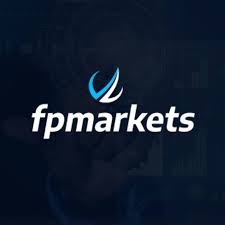You are charged $4.47 as an overnight charge when you go long on AUD/USD. If you go short, you are paid $1.08. Swaps are updated daily so this cost might change.
| Instruments |
Leverage |
| Forex |
30:1 |
| Indices |
20:1 |
| Digital Currencies |
2:1 |
| Commodities |
10:1 |
| Shares and ETFs |
5:1 |
| Cryptocurrencies |
2:1 |
Negative balance protection: FP Markets protects your account from negative balance
Deposit/withdrawal time: Funding is instant via credit/debit cards, Skrill, and Neteller. It takes 1 business day via bank transfers. Withdrawal takes up to 1 business day on all payment methods.
Support:You can get support from FP Markets via phone calls, email, and live chat. On Saturdays and Sundays, support is available between 08:00 am and 16:00 pm local time.
FP Markets Pros
- ASIC regulation
- Short deposit/withdrawal time
- cTrader is now available
- ECN Pricing on all accounts
- Wide range of CFDs
- Zero inactivity fees
What is a Forex Broker?
A forex broker offers brokerage services, that is a platform, to retail and professional traders who want to speculate on currency pairs & other markets as CFDs, by going long (buy) or short (sell). Through a forex broker, your profit or loss from trading CFDs is cash settled in a brokerage account you have opened with the broker.
A forex broker could be a market maker which means they could be taking the opposite sides of your trades or a no-dealing desk broker that connects you to buyers/sellers through their liquidity providers via computerized networks.
How We Selected the Best Forex Broker in Australia
1) Is the Forex Broker Licensed by ASIC?
You must only trade with a forex broker that is licensed by ASIC. Trading with a regulated broker guarantees the safety of your funds.
To check if a broker is truly licensed by ASIC, you can follow these steps:
Step 1) Go to the Forex Broker’s website and check their regulation statement. It is usually at the bottom of the website.
For this example, we visit Pepperstone’s website, which is an ASIC-regulated forex broker. Here is an example of Pepperstone.

The screenshot shows their registered name as Pepperstone Group Limited with AFSL number 415530.
Step 2) The next step is to confirm the regulation details found on the broker’s website.
If the company name and AFSL number match, the broker’s regulations are valid. To confirm these details, You can Go to the ASIC website.
Enter the broker’s registered name into the search box as shown below. In the within space, select organization and business names.

Click on the go icon. A list of companies will show up. Mark Pepperstone Group Limited as shown in the picture.
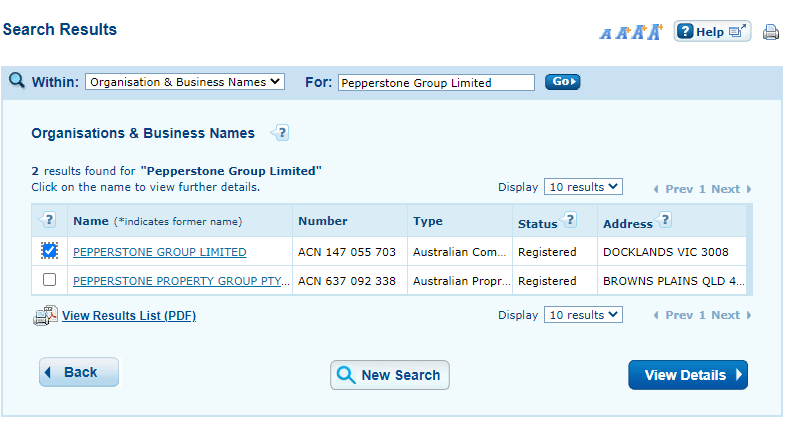
Click the view details icon. The next page will show you the broker’s regulation details as displayed below.
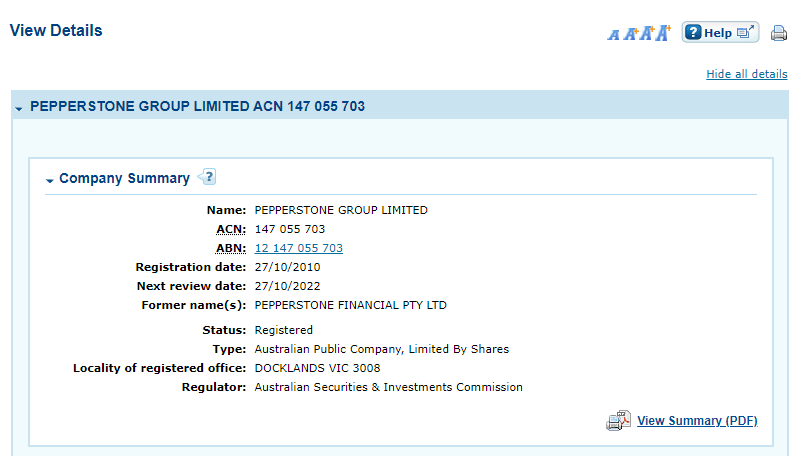
Do you see how the details on the ASIC and the broker’s website match?
The details show that Pepperstone Group Limited is regulated with ASIC. It mentioned their registration date of 27/10/2010 and the status of registration. It is important to check all these details and make sure that you don’t miss anything.
2) What are the Trading and Non-Trading Charges?
Trading charges include spread, swap, and commissions. Non-trading charges can include deposit/withdrawal fees and inactivity fees.
You need to check your broker’s overall charges to know if they are high or low. High trading fees affect your profit or loss so you should check them.
You can always get these details on the broker’s website.
Here is an example of trading charges using IC Markets’ fees.
We are buying a Standard lot of AUD/USD at 0.7211. Two days later, the currency pair rose in value from 0.7211 to 0.7241 (30pips) and you closed the trade. You just made AUD 300 (10x30pips). According to IC Markets, the round turn commission for trading AUD/USD is AUD 7. There is also a swap of AUD 2.57 for overnight charges. The total trading charges here is:
Commissions + 2-day swap which is AUD 7 + AUD 5.14 = AUD 12.14. Your final profit is therefore AUD 287.86 (AUD 300 – AUD 12.14).
The picture below shows IC Markets’ swap rates for some currency pairs.
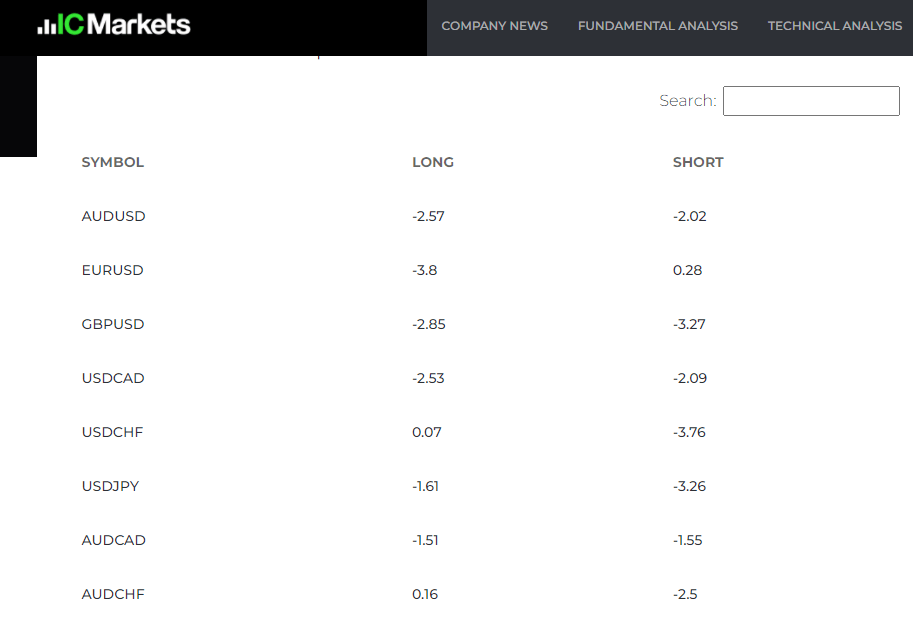
You can use the search box to find any instruments (currency pairs, indices, commodities, etc.) and their swap rates.
3) Trading Conditions
A good trading condition is a combination of different factors. You want to be sure your broker has a good range of CFD markets (currencies, stock, indices, commodities, etc.). These instruments must be available at low prices.
You also want to check the broker’s order execution policy. Is it instant or market execution? Do they have a dealing desk? It is important to ask all these questions & any other questions that you have in your mind.
You should also confirm if your broker offers negative balance protection.
You can check for these in the broker’s FAQs section or directly talk to the broker’s support if you cannot find this information.
4) Is the Customer Service Good?
Good customer service should include at least a local Australian phone number on the broker’s website & it should be reachable. An email address and live chat should be available too.
These different means of support should be accessible and not hidden deep somewhere where you cannot easily find them. Responses should be as quick as possible.
Here is IC Market’s Customer Service page as an example. Here we could easily find their contact information, emails, and access live chat Support.
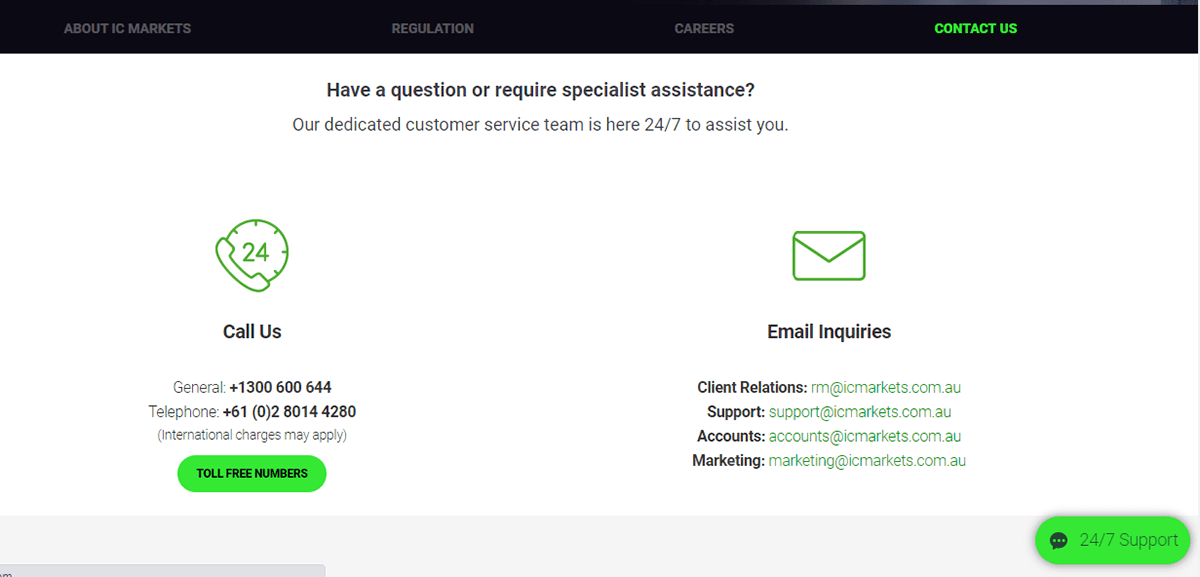
5) Account types
Brokers usually give a breakdown of account types on their websites. You will also find in this breakdown key features of the accounts. You want to look for an account with low spreads and low commissions. This is a major factor to consider when choosing your trading account.
Having multiple account types can offer you the flexibility to trade, and generally brokers have different fees structures for different account types.
Let’s understand this with an example. Forex brokers generally have Pro accounts (for Professional traders) & Standard Accounts (for Retail traders). The difference can be in terms of leverage & lower fees for large volume traders.
Standard accounts are basic account types with standard fee structures, generally as spreads. Although some brokers also have Standard accounts with low spreads, but some commission is involved for each trade (depending on your lot size).
For example, below is the screenshot from Pepperstone website where they highlight the difference in leverage for Professional clients.
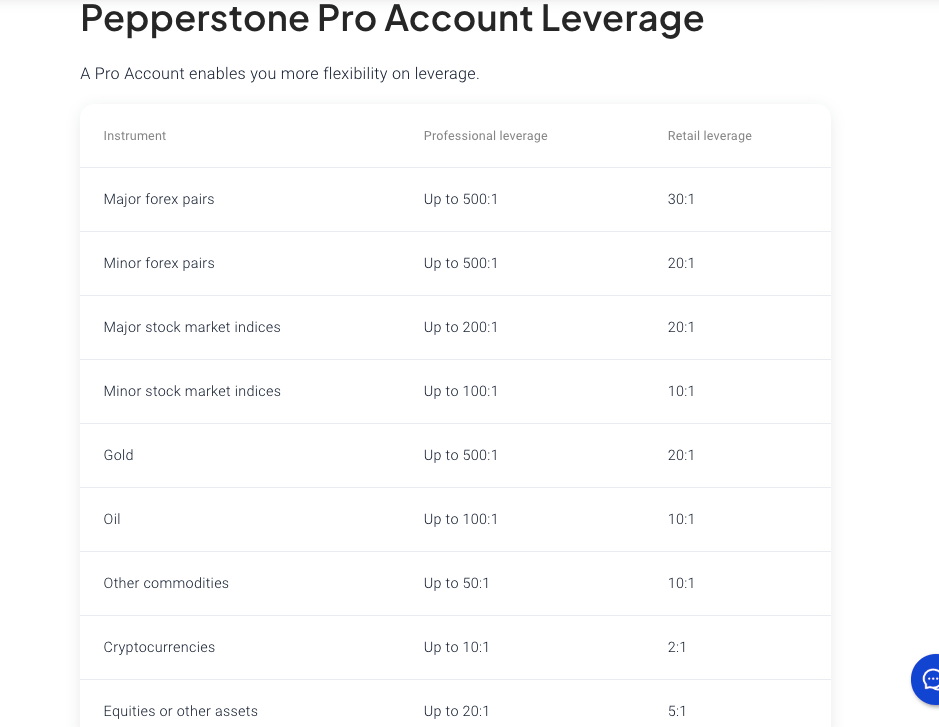
But the eligibility for opening Pro Account is much higher, including having a large trading volume & adequate knowledge of derivatives trading.

Let us see what it looks like for retail traders at Pepperstone (example broker).
Here is a screenshot of Pepperstone Australia’s account & platform selection.
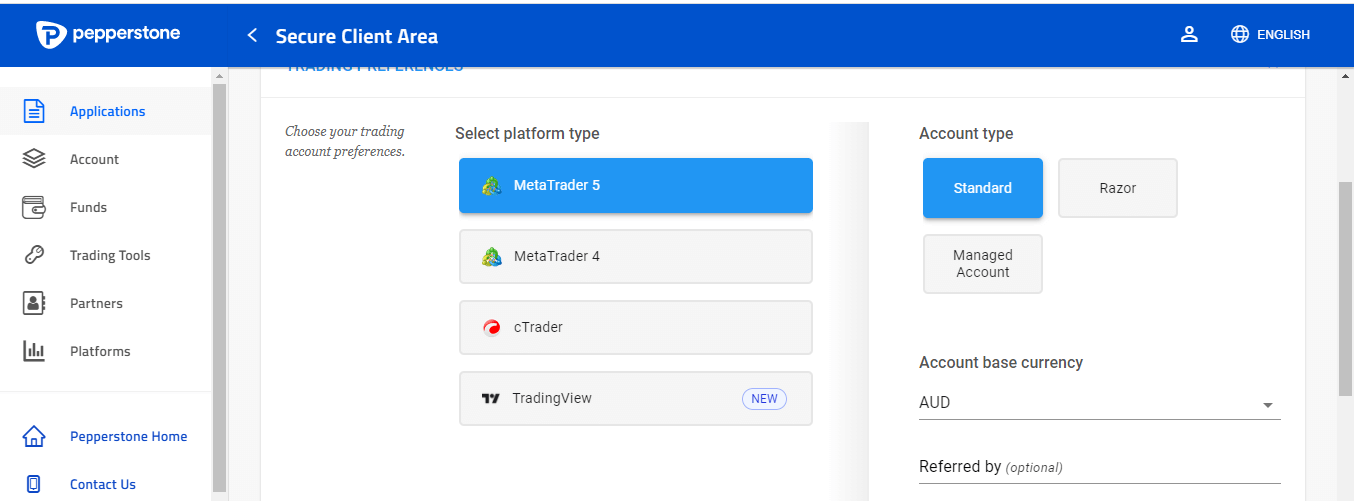
At the top right of the page, you can see the account type section. You only need to select out of the three options there. You will find that section with every broker. It might not look like this exactly. But you will be the one to decide regardless.
You should also know that there are brokers with one single account type. There isn’t any choice to make here. You open an account and you are good to go.
6) Account Base Curreny
Another factor to consider is the Base Currency of your Trading account.
Most of the Local regulated forex brokers, like IC Markets & Pepperstone for example, have AUD base currency options. This is important if you are depositing in the Australian Dollar, as there will be no currency conversion fees.
Let’s look at the example of eToro. All the deposits & withdrawals at eToro are in USD, and if you are depositing or withdrawing in another currency, like AUD for example, there are extra conversion charges.
Look at the screenshot below from eToro’s website.
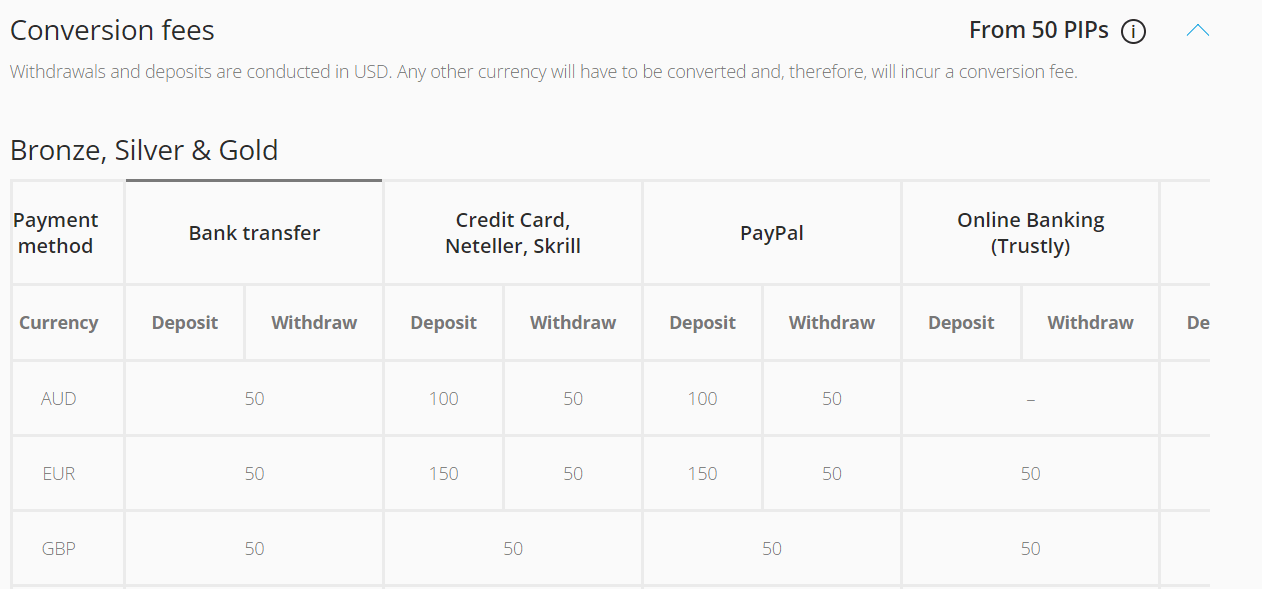
So, it is really important to verify if your broker charges extra fees for conversion. And if they support the base currency account which is the same as your deposit & withdrawal currency.
If you are depositing in AUD & withdrawals are also in the same currency, then it should be preferred to have AUD as your base currency instead of USD.
7) Choice of trading platforms
Metatrader 4 (MT4) and Metatrader 5 (MT5) are the most popular trading platforms. Not all brokers have them though. What you want to pay attention to here are platform-specific features.
Some brokers have more instruments on their MT4 platform than MT5. There could even be differences in swaps and commissions across the two platforms. So make sure to look this up on the broker’s website.
The availability of copy trading is another important thing to check. You will find this on the broker’s website if it is available. On Pepperstone’s website, for example, it is referred to as social trading.
You can find it by clicking on the platforms tab on Pepperstone’s website.
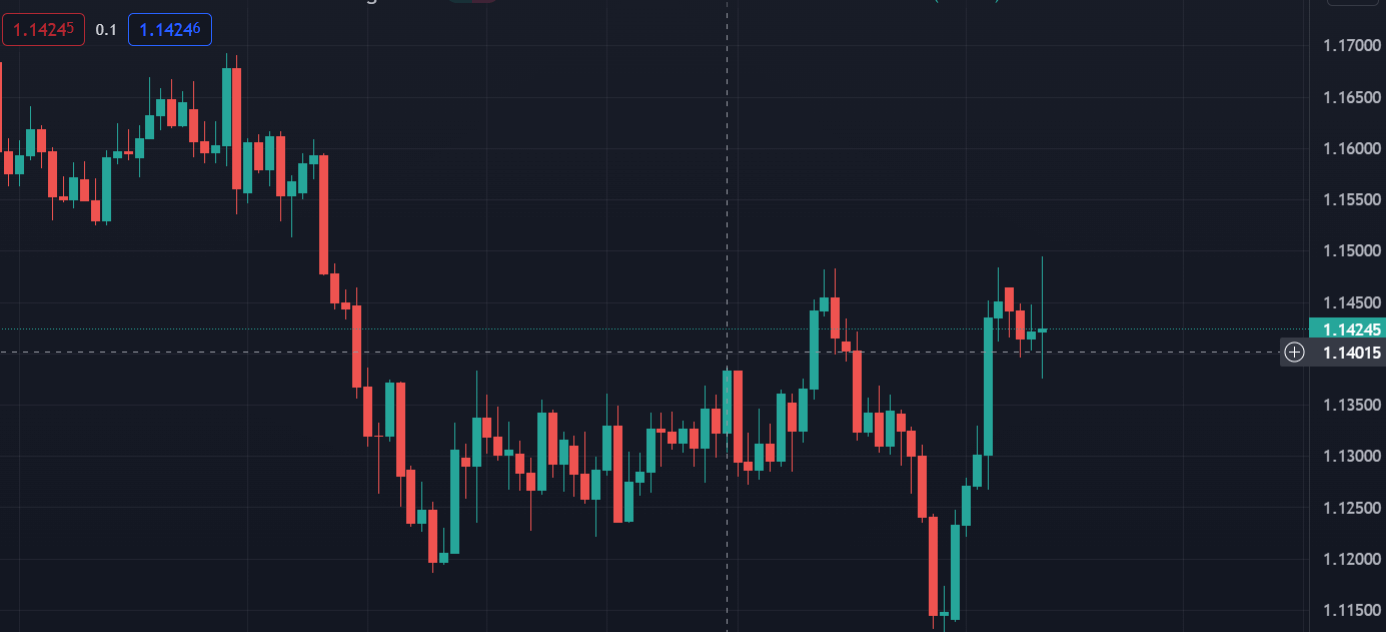
Some forex brokers might also support a proprietary trading platform. These platforms are not usually linked to a third party developer like the MT4, MT5, and cTrader. They are owned by your broker and in some cases might even be named after your broker. XM App, IG App, and IC Social are examples.
Traders favor MT4 and MT5. However, it is possible your broker’s platform has some features, indicators or trading tools that might not be on MT4/MT5. So you might want to give your broker’s platform a try. The only downside is that your broker’s platform might not be available on all devices.
For example, XM and FP Markets only support mobile trading apps. On the other hand, eToro supports their trading app and a trading terminal for desktop users.
8) Number of Instruments
Before making a deposit to your broker, you need to know the number of instruments available for you to trade. As usual, you should go through the broker’s instrument page to see what they are offering you. Currency pairs, CFDs, indices, and commodities are important instruments for a broker to have.
Check the exact number of asset classes being offered & the total trading fees (spread, commission & swap fees) for each instruments under every asset class. For example, if you want to mainly trade major currencies like EUR/USD, GBP/USD etc. then you should look at the fees for these exact instruments.
But also in addition to this, check for the trading charges attached for trading other CFDs, stock indices, and commodities. This is because it will give you a general idea of the fees the broker is charging. They take up a portion of your profits and can add to your loss.
To check, you should visit the broker’s website & see the instruments page. Generally, you will find under sections like ‘markets’. Pepperstone for example mention their asset classes under this section & you can check every asset class like this.
Here is a table showing spreads of certain CFDs on Pepperstone UK’s website.
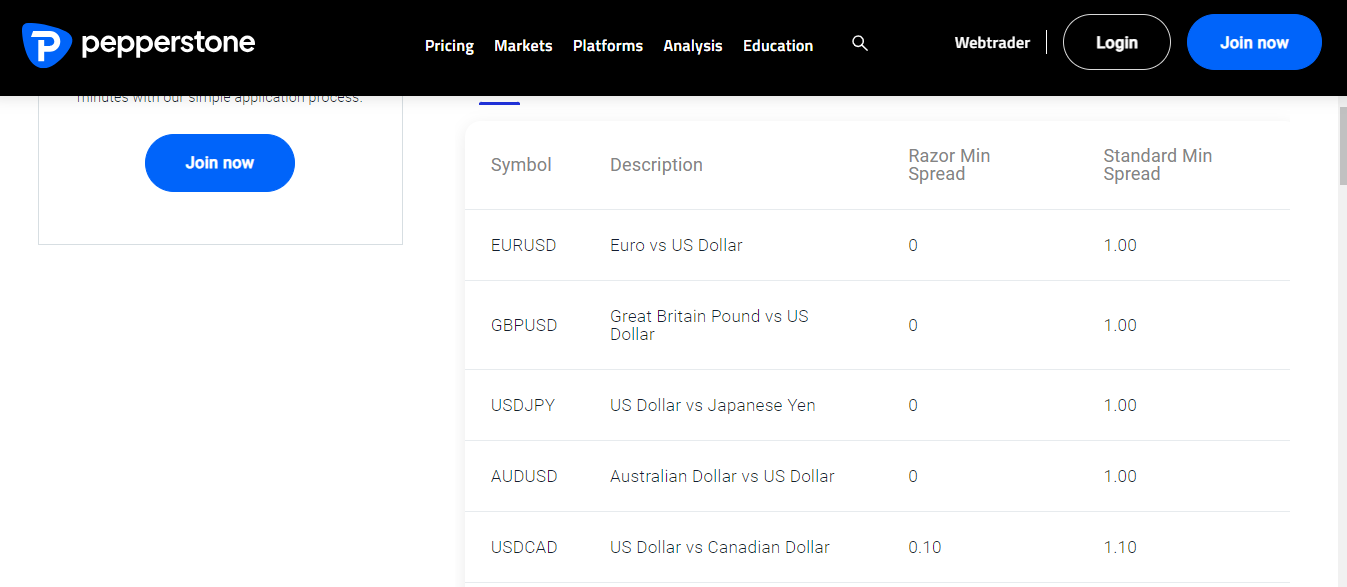
9) Losing Traders Data
Because forex brokers are regulated in different regions, the rules they have to follow are not always the same. In Australia, forex brokers are only required to let you know that your capital is at risk if you trade CFDs. This is in line with ASIC regulation.
However, if your broker is regulated with both ASIC and the FCA, you can get a more detailed risk disclosure. This is because the FCA requires brokers in the UK to reveal the percentage of retail traders that lose money trading CFDs with them. Also, they are required to update this data so traders can only see recent data.
So if your broker is regulated in the UK. All you need to do is go to the UK version of their website to know how likely you are to lose your money. The data is usually at the header of their websites. Here is an example with IG Markets UK website
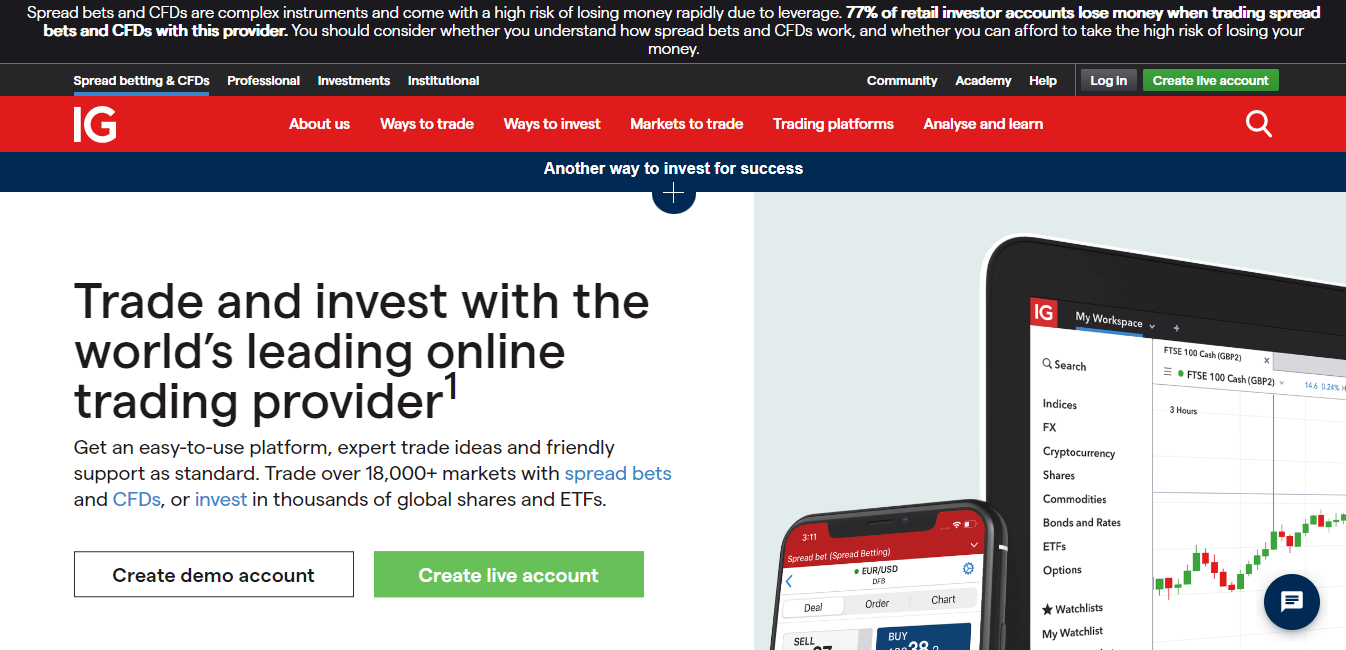
For IG Markets, the percentage of losing traders is 77% which is a bit on the high side. The lower this data is, the lower the chances of losing your money. However, nothing is 100% guaranteed. You also have to make sure you practice proper money management when trading.
10. Other Trading Conditions
a. Order types: Varying order types help give you options in the market. Limit and stop orders can come in handy in entering the market at the right time and price. Your chosen broker must have these orders available on their platform.
Guaranteed stop-loss orders close your trades at specified prices. This order is executed regardless of market conditions. It is important your broker has this service in place because it is key for risk management. In addition, GSLOs are not free. So check with your broker to know if they have it and how much they charge.
b. Negative balance protection: Without negative balance protection, you can lose more than the funds in your trading account. This is why ASIC required, in their publication on CFD rules, that brokers protect traders from experiencing this.
If your chosen broker is regulated with ASIC, you can be sure that they offer negative balance protection. Can you see why trading with a regulated broker is important? You can even confirm with your broker if they provide negative balance protection. By contacting their support, you can verify. However, some brokers have FAQs on their websites. You can use it to verify if they have this risk management tool without waiting for an email or live chat response.
Here is an example on Pepperstone’s website
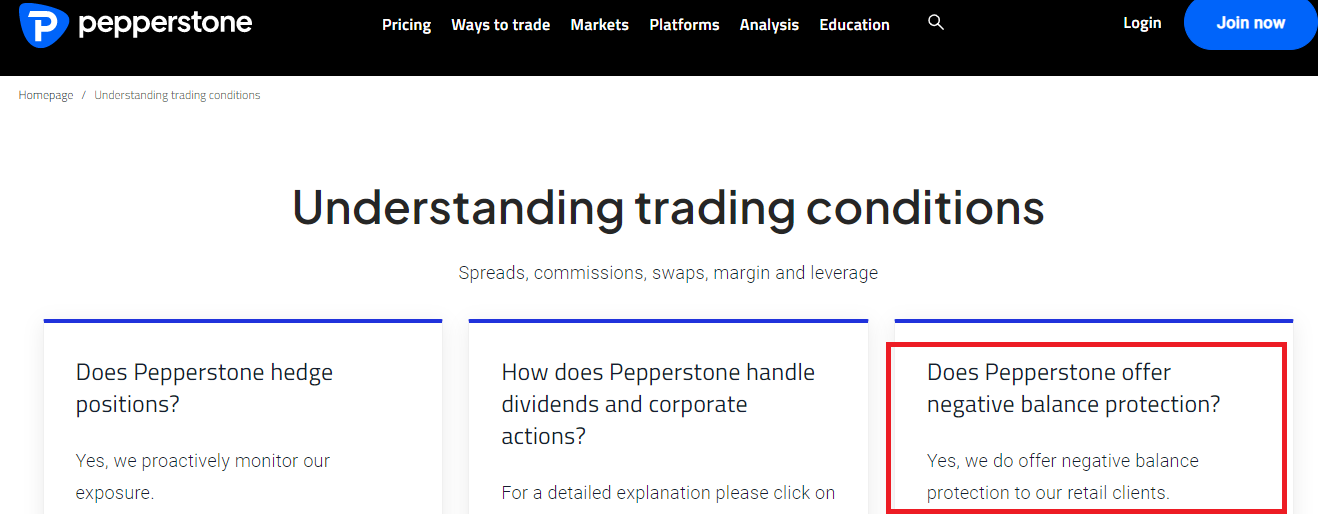
Finally, forex brokers are not mandated to provide negative balance protection if you are a professional trader. However, retail traders are guaranteed to get it.
c. Deposit/Withdrawals: Quick processing, multiple deposit/withdrawal methods, and low charges are the factors to keep a close eye on here. You should also be able to deposit and withdraw through your local bank. Most forex brokers do not charge extra fees for deposits/withdrawals. However, you can incur charges from your bank or e-wallet providers. Your broker does not receive any of these fees.
Summarily, what you want here is a broker with fast processing with little to no fees. Here is a screenshot of Pepperstone’s (example broker) deposit/withdrawal methods.
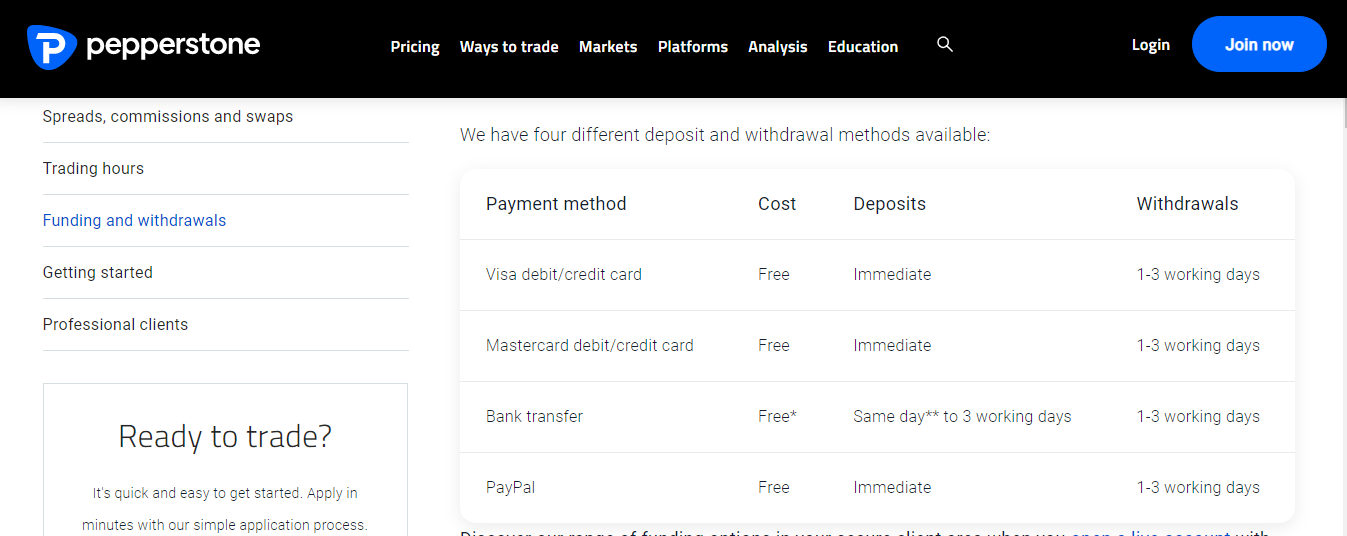
As you can see, Pepperstone combines low fees, multiple payment methods, and quick processing for deposits. Withdrawals can take 1-3 days.
In this regard, eToro is an example of a broker that charges extra fees. They charge zero fees for deposits and $5 for withdrawals.

Another factor you might want to consider here is minimum withdrawals. This is not common but you should speak with your broker’s support to know if they have minimum withdrawals.
d. Education: Education is key. A forex broker should be friendly to beginners. Structured online courses, webinars, articles, and free research tools a forex broker should offer. These should be offered free of charge without extra costs.
Finding a broker’s education is easy. It is usually on their homepage. With few clicks, you can access quality courses and videos for your learning. Let us show you how you can do this (IC Markets is our example). On IC Markets’ homepage, click on ‘More’.
You will see all of the broker’s learning resources under ‘Education’or ‘Help and Resources (both in yellow box). Here is an illustration below
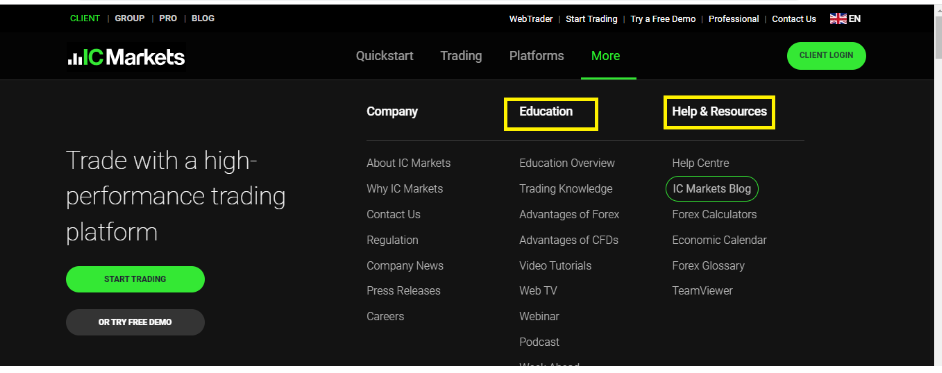
From the image, you can see IC Markets have videos, webinars, podcasts, blogs, etc for your learning. These are not limited to beginners alone. Experienced traders can also learn a thing or two from them. Furthermore, the broker also has trading tools like forex calculators and economic calendars.
How to Open an Account with a Forex Broker?
Opening an account with a forex broker should be easy and not take too long. Here is how to go about it with Pepperstone:
1) On your browser, go to pepperstone.com/en-au and click on join now

2) Enter your email on the following page
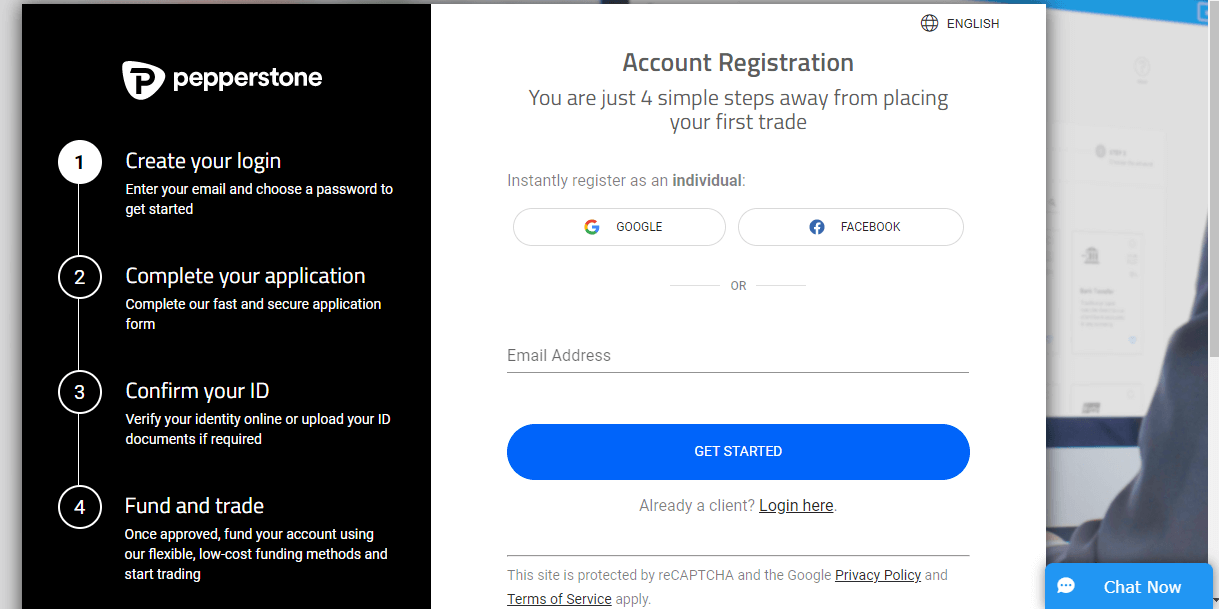
3) The next step is to enter your password and click on register.
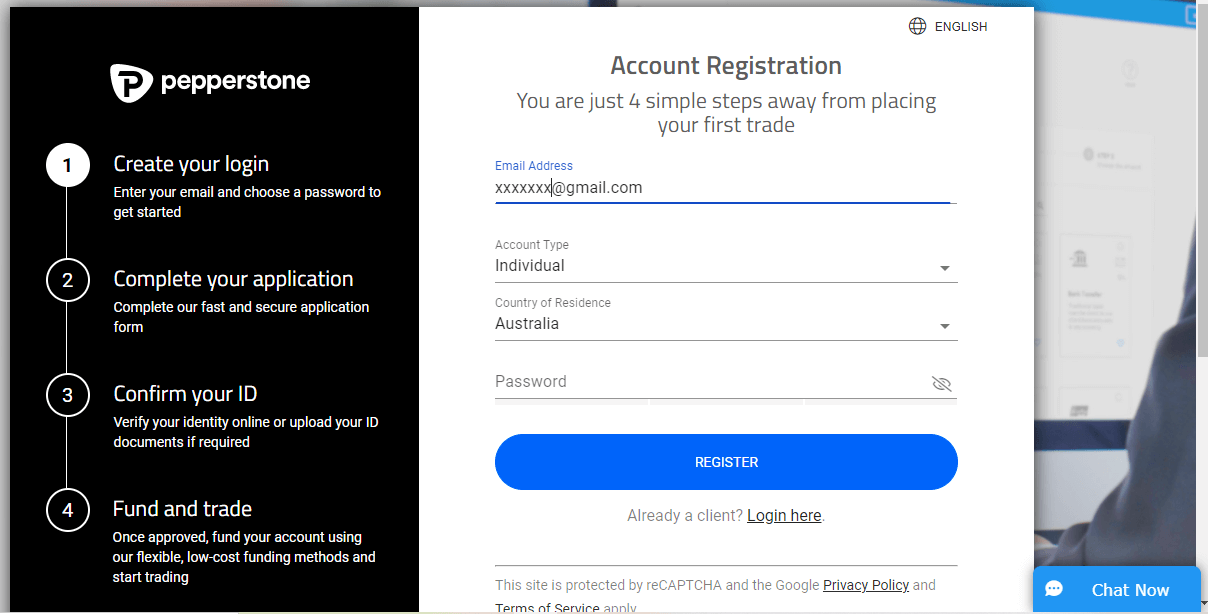
4) The next page is your secure client area. Here, you are to fill in your personal details. Make sure they are correct because they will be verified.
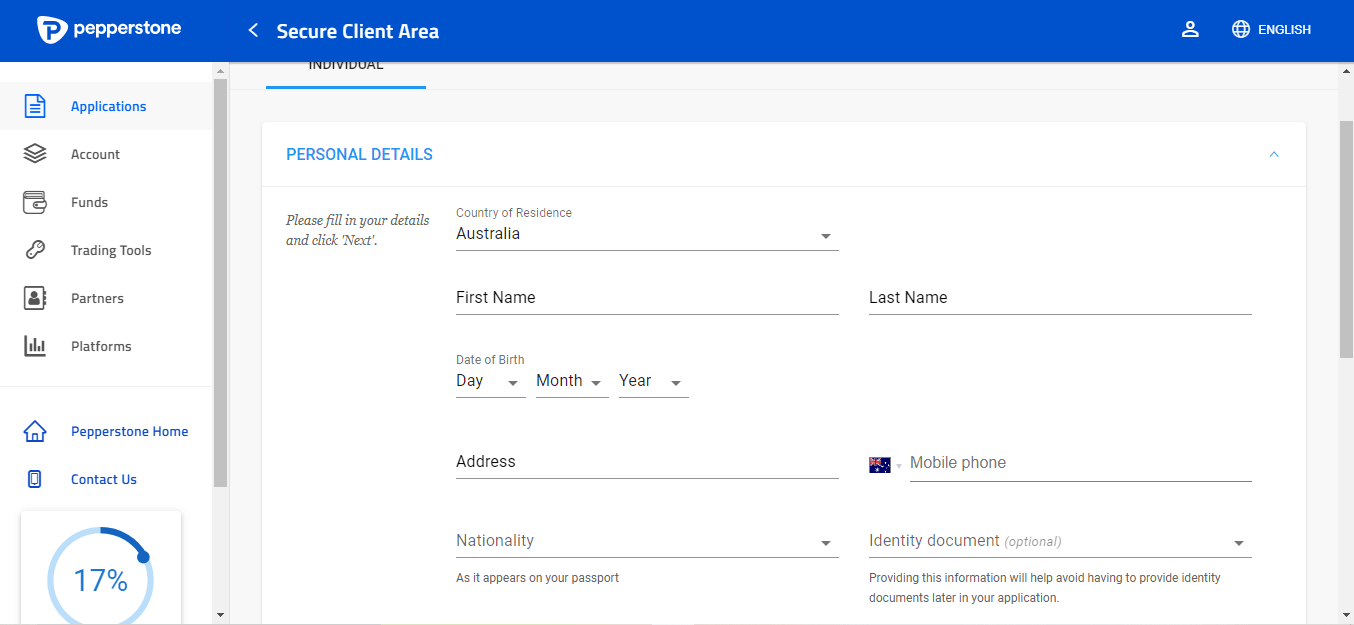
5) Now we are getting to the end. For this step, you will be choosing your preferred account type and trading platform.

On the same page, you will need to fill in your employment details and agree to terms and conditions. You will also need to submit your KYC documents to verify your ID.

Once you complete this final step, you can fund your account and begin your trading journey.
Do I need a broker for Forex Trading in Australia?
Yes, you need a forex broker to trade in the foreign exchange market. They act as an intermediary between you and the interbank market where currencies are actually traded.
Here’s why:
1) Access to the Market: Retail traders like you and me can’t directly access the interbank market.
Forex brokers have the licenses and relationships to do so, and they provide you with a platform to place your buy and sell orders. For example, on the backend, the access different providers to get the prices.
2) Order Execution: Your broker takes your order and finds a counterparty to match it with on the interbank market. They handle the execution of the trade, ensuring it’s done efficiently and at the best available price.
You can see this process play out on their forex trading platforms.
The brokers have access to liquidity providers, or a market maker may act as the counterparty themselves to your trades.
Let’s understand through an example. Let’s assume that you want to buy GBP/USD. First of all you need quote (Bid & Ask prices), which you can check on the broker’s platform. When you place a ‘market order’, the broker finds the fill for you by send it to their liquidity providers or directly acting as the counterparty.
All of this happens in real time within a few micro seconds. Without a broker, retail or professional traders cannot trade currencies directly.
FAQs on Best Forex Brokers Australia
Is forex trading legal in Australia?
Forex trading is legal in Australia & it is regulated by Australia Securities and Investments Commission (ASIC). You should only trade with ASIC regulated Forex Brokers for the safety of your funds & ensuring grievance redressal in case of any dispute with a broker.
Which forex brokers are good in Australia?
This depends on many factors such as regulation, trading fees, non-trading fees, and customer support. A low-risk forex broker for Australian traders will be the one that performs well on all these factors. But an important fact is that you must never trade with an unregulated broker.
Some forex brokers that are considered low-risk for trading CFDs are Pepperstone, IC Markets, and CMC Markets.
How to check if a forex broker is licensed?
Forex Broker in Australia must be licensed with ASIC. You must not trade with any unlicensed forex broker, otherwise, there is a high risk that your funds will be unsafe.
To check whether a forex broker is regulated you must verify its license no. on ASIC Connect’s Professional register. Refer to the steps in our regulated forex brokers guide on how you can check if a broker is regulated or not.
What does a forex broker do?
Forex Broker offer their platform to retail & professional traders to allow them to trade currencies & CFDs on various instruments. By using a forex broker, you can buy or sell currencies like AUD/USD as a CFD instrument to speculate on their price.
How much do forex brokers charge?
Total fees vary with forex brokers. Some brokers charge a commission while some do not. Some charge inactivity fees and some do not. Fees can be high or low depending on the broker.
We use overall fees as a metric in our comparison of Australian Forex Brokers along with many other factors.








